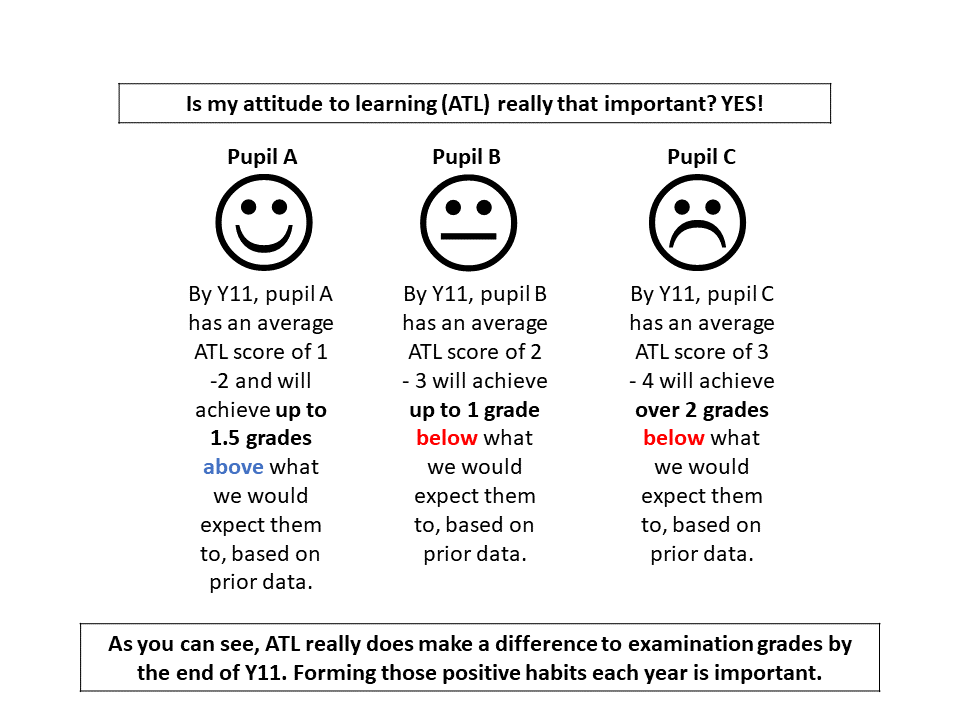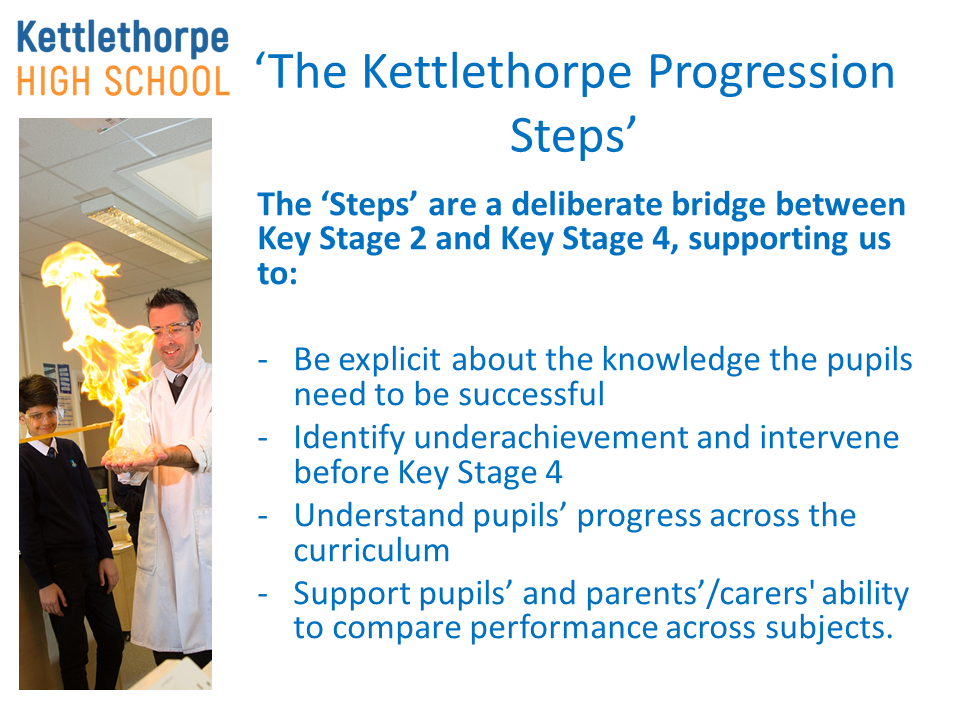Assessment at Key Stage 3: Kettlethorpe Progression Steps
For information and explanation on what we mean by the ‘Kettlethorpe Progression Steps’, please see the below information:
Attainment Grades
At KS3, we use the ‘Kettlethorpe Progression Steps’ to report academic attainment in each subject.
These steps are from 1 to 9 with ‘Step 1’ being the lowest and ‘Step 9’ the highest (please note, these are not equivalent grades to GCSE).
By the end of Y7 we would expect pupils to reach a ‘Step 4’ and by the end of Y8 we would expect pupils to reach a ‘Step 5.’ Depending on your child’s starting point, this may be higher or lower.
Teachers will report on your child’s progress in the following way to ensure they collect detailed information which will inform any extra support or stretch and challenge that they may require to make as much progress as possible:
- 4A means a strong ‘Step 4’, confident in almost all aspects of the Step and almost at Step 5.
- 4B means a secure ‘Step 4’.
- 4C means starting at ‘Step 4’ and beginning to understand the skills and knowledge for this ‘Step’.
On average we would expect pupils to move up one ‘Step’ per year, so attainment that increases by more than one ‘Step’ would be good progress.
Attitude to Learning
Evidence clearly demonstrates that there is a close link between the attitude to learning (ATL) grade awarded to your child and the level of progress they make. We therefore suggest, when reading your child’s report, that you pay particularly close attention to the attitude to learning (ATL) grade.

Target Setting and Target Stickers
Target stickers on pupils’ books show the ‘Step’ that pupils are expected to achieve by the end of the academic year, given as a whole ‘Step’. These are based on English and maths SAT scaled scores and may not fully reflect a pupil’s strengths across a wide range of different subject areas, including practical areas such as art or PE. Targets may also be adjusted based on other transition data such as baseline assessments or teacher judgement upon joining in Y7. Targets are given as a guideline only and are not a ceiling limit or a guarantee of success for any pupil.
Progression to KS4
Presenting KS3 ‘Progression Steps’ in a 1 – 9 format allows us to plot expected trajectories for our pupils. These are not flight paths or guaranteed pathways to a future KS4 grade, but instead a visualisation of a typical journey from a similar pupil based on prior data.
Please see below this visualisation as it may assist you in seeing and understanding the link from KS2 performance to KS3, and then to eventual KS4 performance:


Subject Progression Step Criteria 1-9
Reporting on Pupil Progress at Key Stage 3
Year 7 Autumn Term
Parents/carers will receive an update on their child’s:
- Reading Age
- Attitude to Learning (ATL)
- Attendance
Year 7 Summer Term
The last progress summary report of the academic year will include:
- Reading Age
- Attitude to Learning (ATL)
- Attendance
- Predicted end of year ‘Progression Step’ grade (based on current class work, assessment data and home learning).
- A written statement from the child’s tutor informing parents of how their child has developed through the academic year.
Year 8 Spring Term
Parents/carers will receive an update on their child’s:
- Reading Age
- Attitude to Learning (ATL)
- Attendance
- Predicted end of year ‘Progression Step’ grade (based on current class work, assessment data and home learning).
Year 8 Summer Term
The last progress summary report of the academic year will include:
- Reading Age
- Attitude to Learning (ATL)
- Attendance
- Predicted end of year ‘Progression Step’ grade (based on current class work, assessment data and home learning).
- A written statement from the child’s tutor informing parents of how their child has developed through the academic year.
